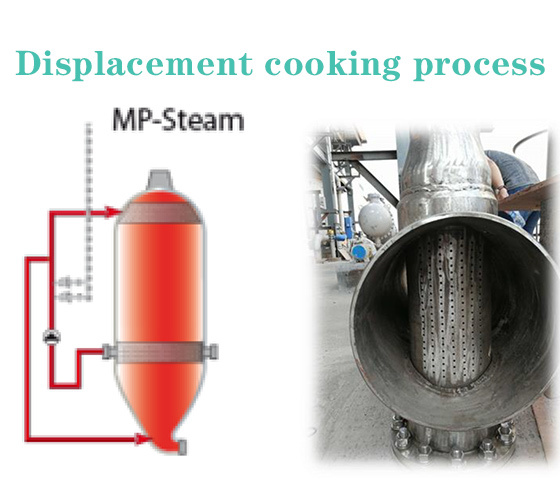Transforming Wood into Paper: An Insight into Pulp Processing Equipment

---
Pulp processing equipment plays a critical role in the paper manufacturing industry, acting as the backbone of converting raw materials, such as wood, into pulp for paper production. The process begins with the breakdown of wood fibers into a slurry, which is then refined, bleached, and processed into various paper products. Understanding the intricacies of pulp processing equipment can significantly enhance production efficiency and product quality.
The initial step in the pulp processing journey is the pulping process, where wood chips are transformed into pulp through mechanical or chemical means. Mechanical pulp, often made using grinders, retains a high level of fiber integrity but may compromise brightness. In contrast, chemical pulping utilizes chemicals to dissolve lignin and separate the cellulose fibers, resulting in a higher quality pulp suitable for producing fine paper products. Each method requires specialized pulp processing equipment, tailored to the specific needs of the production line.
Once the pulp is produced, it must be refined to achieve the desired consistency and fiber length. Refiners and beaters are crucial components of pulp processing equipment used in this stage. They work by mechanically treating the pulp to enhance its fiber properties, improving bonding strength and resulting in a stronger final product. The choice of refining equipment can significantly impact the paper’s quality, making it essential to select the right machinery based on the desired characteristics of the end product.
Bleaching is another vital step in pulp processing, aimed at enhancing the brightness and color of the pulp. This process often involves a series of chemical treatments, which require specialized equipment designed to handle various bleaching agents safely and effectively. The proper integration of bleaching technology into the pulp processing line can lead to significant improvements in the final paper quality while minimizing environmental impacts.
After the pulp has been refined and bleached, it is then ready for the paper-making process. Pulp processing equipment also includes systems for dewatering, drying, and forming the paper sheet. The efficiency of these machines directly affects the overall production speed and quality of the finished products. Moreover, advancements in technology have led to the development of automated systems that optimize production flow and reduce waste.
In conclusion, pulp processing equipment is fundamental to the paper manufacturing industry, impacting everything from production efficiency to product quality. Manufacturers must invest in the right machinery to ensure that they can meet market demands while maintaining high standards of sustainability and performance. Understanding the various types of pulp processing equipment available and their functions is crucial for anyone involved in the paper production industry, enabling improved operational decisions and enhanced final products.
Pulp processing equipment plays a critical role in the paper manufacturing industry, acting as the backbone of converting raw materials, such as wood, into pulp for paper production. The process begins with the breakdown of wood fibers into a slurry, which is then refined, bleached, and processed into various paper products. Understanding the intricacies of pulp processing equipment can significantly enhance production efficiency and product quality.
The initial step in the pulp processing journey is the pulping process, where wood chips are transformed into pulp through mechanical or chemical means. Mechanical pulp, often made using grinders, retains a high level of fiber integrity but may compromise brightness. In contrast, chemical pulping utilizes chemicals to dissolve lignin and separate the cellulose fibers, resulting in a higher quality pulp suitable for producing fine paper products. Each method requires specialized pulp processing equipment, tailored to the specific needs of the production line.
Once the pulp is produced, it must be refined to achieve the desired consistency and fiber length. Refiners and beaters are crucial components of pulp processing equipment used in this stage. They work by mechanically treating the pulp to enhance its fiber properties, improving bonding strength and resulting in a stronger final product. The choice of refining equipment can significantly impact the paper’s quality, making it essential to select the right machinery based on the desired characteristics of the end product.
Bleaching is another vital step in pulp processing, aimed at enhancing the brightness and color of the pulp. This process often involves a series of chemical treatments, which require specialized equipment designed to handle various bleaching agents safely and effectively. The proper integration of bleaching technology into the pulp processing line can lead to significant improvements in the final paper quality while minimizing environmental impacts.
After the pulp has been refined and bleached, it is then ready for the paper-making process. Pulp processing equipment also includes systems for dewatering, drying, and forming the paper sheet. The efficiency of these machines directly affects the overall production speed and quality of the finished products. Moreover, advancements in technology have led to the development of automated systems that optimize production flow and reduce waste.
In conclusion, pulp processing equipment is fundamental to the paper manufacturing industry, impacting everything from production efficiency to product quality. Manufacturers must invest in the right machinery to ensure that they can meet market demands while maintaining high standards of sustainability and performance. Understanding the various types of pulp processing equipment available and their functions is crucial for anyone involved in the paper production industry, enabling improved operational decisions and enhanced final products.


评论
发表评论